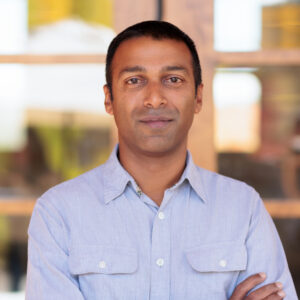“Listening to the Beat of New Ocean Technologies for Harvesting Marine Energy.”
Acoustics Today, Vol. 19, Iss. 4, pgs. 23-31.
Contact Information
 Joseph Haxel
Joseph Haxel
joseph.haxel@pnnl.gov
Coastal Sciences Division
Pacific Northwest National Laboratory
1529 W. Sequim Bay Road
Sequim, Washington 98382, USA
Joseph Haxel is a research scientist at the Pacific Northwest National Laboratory, Sequim, Washington, where his current focus is on passive acoustic technologies and methods for measuring and characterizing sounds from marine renewable energy systems. He has a 20-year background in ocean acoustics that includes the development of hydrophone systems for fixed and mobile platforms to study marine geophysical processes, bioacoustics, and anthropogenic sounds from the depths of the Challenger Deep in the Marianas Trench into the shallow surf zone. Joe is a member of the Acoustical Society of America and holds a joint appointment with Oregon State University, Corvallis.
 Christopher Bassett
Christopher Bassett
cbassett@uw.edu
Applied Physics Laboratory
University of Washington
1013 NE 40th Street
Seattle, Washington 98105, USA
Christopher Bassett has worked on passive and active acoustics applications since 2009. This work has covered a broad range of topics from high-frequency scattering in fisheries acoustics to measurements of passive applications in anthropogenic noise and physical processes. His work has increasingly focused on studies of the environmental impacts of marine energy technology and projects working to develop and deploy small-scale marine energy devices to enable increased persistent power at sea for science and applied research applications. He is a member of the Acoustical Society of America (ASA) and serves as a regular Acoustical Oceanography Technical Program Organizer for ASA meetings.
 Brian Polagye
Brian Polagye
bpolagye@uw.edu
Mechanical Engineering Department
University of Washington
MEB 302
Seattle, Washington 98195-2600, USA
Brian Polagye is a professor of mechanical engineering, University of Washington, Seattle. His research group, the Marine Renewable Energy Laboratory, studies renewable energy conversion from waves and currents. The group’s research focus within this area is on experimental optimization of current turbines and wave converters as well as developing methods to accurately measure radiated noise from such systems when they are deployed in the field. Brian holds joint appointments with the Applied Physics Laboratory, University of Washington, and the Pacific Northwest National Laboratory, Sequim, Washington.
 Kaustubha Raghukumar
Kaustubha Raghukumar
kraghukumar@integral-corp.com
Integral Consulting, Inc.
200 Washington Street, Suite 201
Santa Cruz, California 95060, USA
Kaustubha (Kaus) Raghukumar is an underwater acoustician and oceanographic modeler at Integral Consulting, Inc., Santa Cruz, California. He has 20 years of experience in modeling and at-sea measurements of hydrodynamic processes such as surface waves, internal waves, and underwater sound. He has participated in several international at-sea experiments that focused on the impact of oceanographic fluctuations on ocean acoustic propagation. Kaus continues to develop state-of-the-art acoustic and vibration monitoring techniques and technologies for the US Department of Energy and the Office of Naval Research. He is currently involved in studies of shallow-water acoustic propagation numerical modeling of coupled atmosphere-ocean interactions for offshore wind.
 Cailene Gunn
Cailene Gunn
cailene.gunn@pnnl.gov
Coastal Sciences Division
Pacific Northwest National Laboratory
1529 W. Sequim Bay Road
Sequim, Washington 98382, USA
Cailene Gunn is a marine scientist and science communicator in the Coastal Sciences Division, Pacific Northwest National Laboratory, Sequim, Washington, who is passionate about coastal ecosystems and the advancement of innovative ocean-based solutions to climate change. Cailene’s background is in coastal wetland biogeochemistry. Although she loved working as a mud-covered field researcher, she now works on projects that research the potential impacts of marine energy and offshore wind deployments on the environment and coupled human-natural systems. She also works with technical projects as a science communicator and is dedicated to STEM outreach and education.
